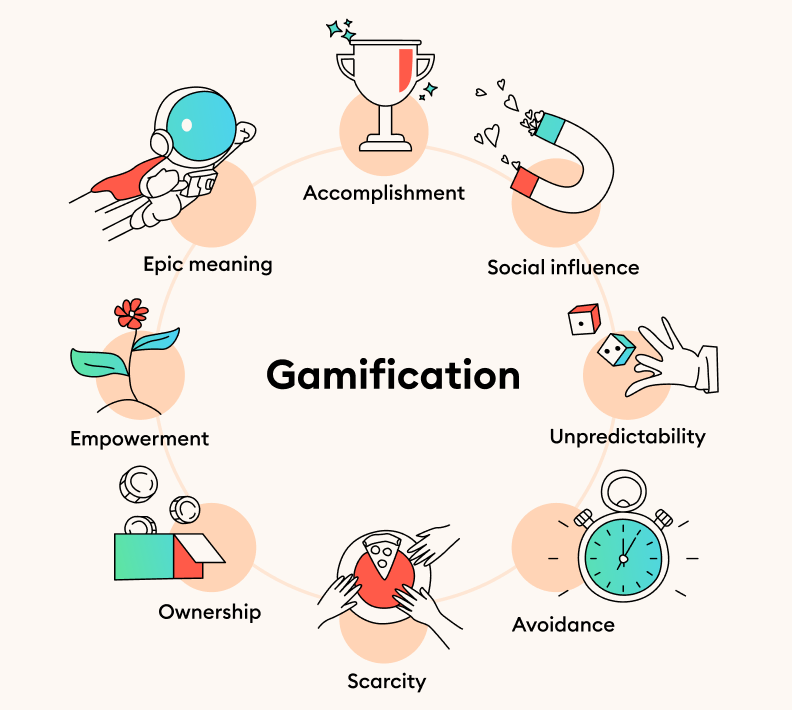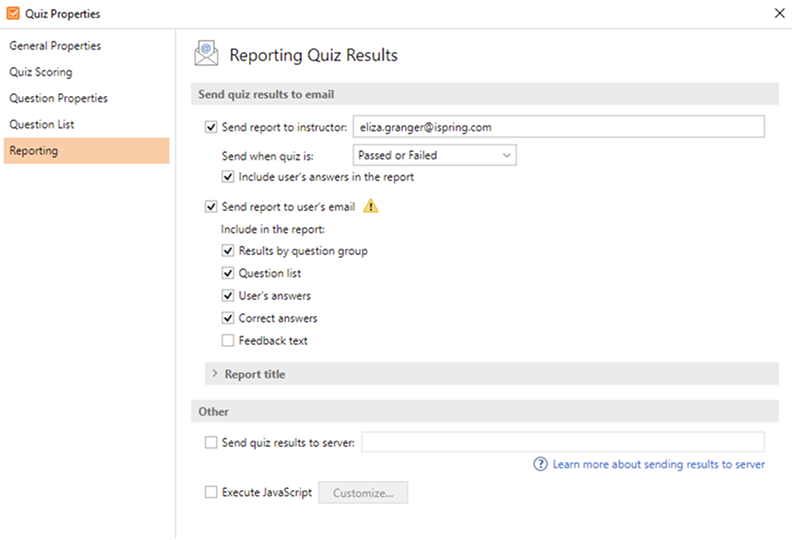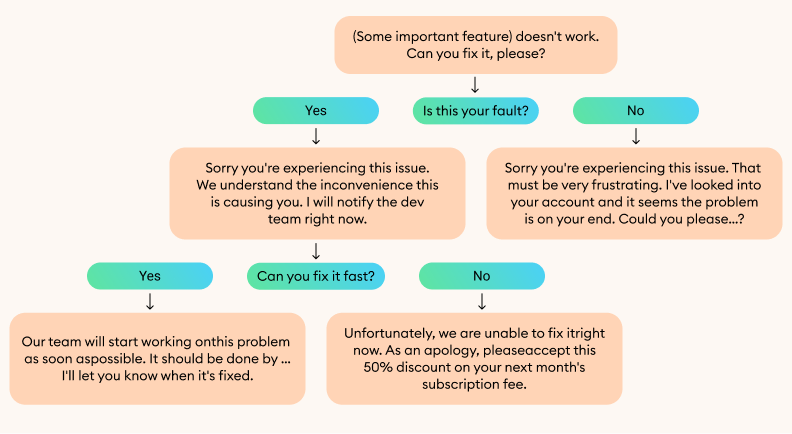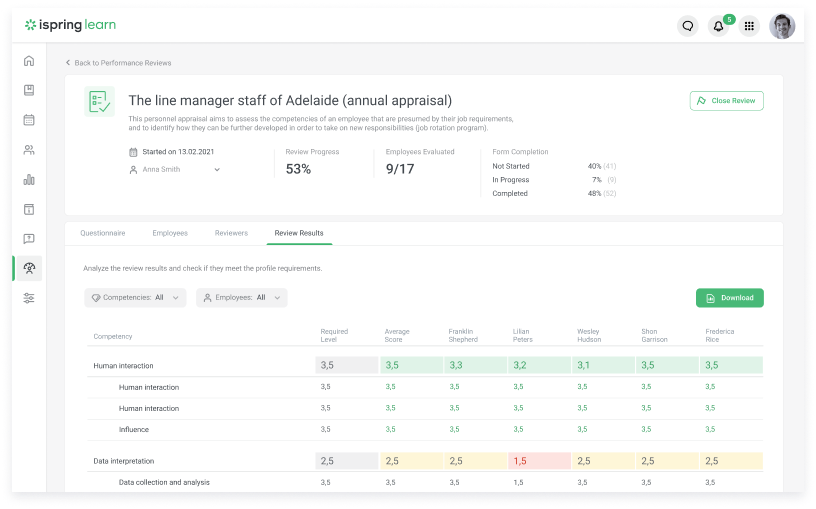Product Knowledge Training 101: The Whys, Whats, and How-tos

The world is evolving rapidly, and businesses are constantly expanding their range of products and solutions. With each passing year, offerings become more complex, making it increasingly difficult to stand out from the crowd.
At the same time, every brand has its unique values, mission, and target audience. Finding the right customers — the ones who will truly appreciate your product and benefit from it — requires a thoughtful and strategic approach.
Product knowledge is the key to ensuring that your offerings reach the right people. When customers trust a product, they use it with confidence and satisfaction, fostering long-term relationships with your brand.
However, this can only happen when each team member is well-equipped with the necessary knowledge and skills to communicate effectively, highlight value, and address customer needs.
Product knowledge training is essential for making this possible. It ensures that every employee — whether in sales, customer service, or marketing — has the expertise to engage with customers meaningfully, creating smooth interactions. In addition, product knowledge training should also be addressed to your customers, partners, and end-users.
The benefits of a well-structured product knowledge training program include:
- Enhanced sales performance. Companies with comprehensive employee training programs boast a 218% higher income per employee than companies without formalized training.
- Customer satisfaction and retention. 86% of buyers are willing to pay more for great customer experience, which is closely tied to knowledgeable staff.
- Reduction in support costs. Companies that invest in customer education see an average 16% decrease in support questions and a 7% reduction in annual customer support costs.
In this guide, we will explore how to implement in-depth product knowledge training across different levels of your organization — ensuring that your approach is modern, efficient, and powered by the latest technology.
Whether you’re training new hires, sales reps, customer service teams, partners, or customers, this article will provide you with a step-by-step blueprint to make your product training both impactful and cost-effective.
What Is Product Knowledge Training?
Product knowledge training is an organized learning program that teaches employees, partners, and sometimes even customers about a product’s features, benefits, usage, troubleshooting, and competitive positioning.
It goes beyond memorizing specifications — it’s about understanding how the product solves customer problems and how to convey that information effectively. This training is critical for any business that sells products or services, ensuring consistency, accuracy, and credibility in all customer interactions.
For example:
- Sales representatives with extensive product knowledge will do a better job of explaining product value, handling objections, and providing more personalized offers.
- Marketers will be able to tell more persuasive stories, which will attract more interested prospects.
- The support team will respond more quickly to customers’ requests and provide more personalized and comprehensive help.
- Each team member will be more motivated and will become product ambassadors.
Depending on the learners’ roles and responsibilities, a product training program can focus on different aspects, have different learning objectives, and bring different benefits to your business.
Let’s look closer at product knowledge and how it can contribute to your company’s success.
Why Is Product Knowledge Training Important?
When it comes to product and service training, we usually conjure up an image of training geared toward sales reps. But aside from the sales staff, there are a lot of people inside and outside your company you need to train on your products to make your business thrive.
Let’s list some benefits of training on product knowledge.
1. Build a team of productive enthusiasts
A team member who knows the company’s products inside and out and believes they can bring great value to lots of customers and the world is not just a “desk jockey” from a sales, support, or marketing department, but a dedicated and inspired enthusiast. This type of staff member can form dedicated teams with great motivation and amazing results.
Example: At Best Buy, store employees undergo extensive product sales training to learn everything about the latest tech they sell. Their enthusiasm and expertise make them highly effective at persuading customers and meeting their needs efficiently.
2. Gain credibility and build long-lasting relationships with customers
By the time prospects enter your territory (an office or online marketplace), they have probably looked through your website, read a number of reviews on your products, and consider themselves to be experts in your field. And they are not going to forgive your sales rep for being insecure about your product’s characteristics, options, and benefits.
Sales product training will help your sales team propose your products convincingly, combat prospects’ objections, and gain their trust more readily.
Example: Apple builds structured retail associate training programs that ensure that knowledge is constantly reinforced and applied in ways that matter to customers. Its sales reps are trained to answer detailed customer questions about the characteristics of each device. Training employees to achieve product expertise builds trust with potential buyers.
3. Make your customers experts on your products
Giving your customers detailed information on how to use your products effectively will help you create a comfortable customer journey.
For instance, you can provide your prospective customers with product overviews, specifications, and customer reviews to help them make their choices easier. And your clients will appreciate online videos or screencasts, e.g., how to install your washing machine or adjust a new CRM for the customer’s needs. Here’s a sample of a course created with iSpring Suite:
To get a better understanding of how it works, read our Tattile case study. This Italian company working with vehicle surveillance and intelligent transportation systems used to spend too much effort on recurring IT tickets because customers lacked basic product knowledge. This resulted in an overburdened tech support team and extra costs. There was no structured customer training that would cover the most common issues, and their paid classroom training was not efficient at scale. After they started using iSpring Suite, they were able to create online courses for 400 companies or 1,000 learners by the effort of a two-person team. Now, about 60 support requests per month are being redirected to customer training content, significantly reducing the load on the support agents.
4. Grow business with partner networks
If you want to increase channel sales, you have to provide your partners with product knowledge training as well. This will evidence that you are the right person to start doing business with, as you’re ready to invest in their expertise, development, and success. Moreover, you’ll help them get better results and generate more revenue.
Example: Microsoft offers product certification programs for its partners, ensuring they can promote and support Microsoft solutions effectively.
Product Knowledge Training Objectives
Each audience listed above requires different levels of product knowledge. Here’s how to tailor training to various teams and groups of users.
1. Product training for the sales team
Objective: train the sales reps to present your products, overcome common objections, be well-informed about the products, and close deals faster.
A well-trained sales team is the backbone of a successful business. When sales representatives have an in-depth understanding of the product, they can confidently communicate its value proposition, handle objections effectively, and close deals faster.
Provide your sales team with the following information:
- Product benefits and features. Buyers aren’t just interested in what a product does — they want to know how it benefits them and improves their lives or businesses. Explain a product’s features in a customer-centric language, match features to common customer pain points, tell customer success stories, and run live demonstrations. Your sales team needs to know the range of the customer’s problems that your product solves.
- Target audience and buyer personas. Understanding who the product is for is just as important as knowing what the product does. Create detailed buyer personas and teach industry-specific messaging and active listening skills to enhance your team’s knowledge.
- Competitor comparison. If your team doesn’t know how your product stands out from the competition, they might lose potential buyers to a better-positioned brand. Address weaknesses proactively, encourage competitor analysis, and use actual customer testimonials.
- Sales scripts and objection handling. Training your sales team on how to handle common customer objections gracefully can be the difference between closing a deal and losing a prospect. Provide sales scripts, use mock sales calls, and train adaptability.
- Pricing, discounts, and bundles. Customers need clear, transparent, and value-driven explanations of the costs involved. Teach your sales team how to calculate the final price, compare it with competitors’ offers, and convince the client that their benefits will far outweigh the price they pay. For the B2B market, your sales reps need to be able to calculate the ROI (return on investment) period of your products.
Also read: Retail Training – How to Move It Online
2. Product knowledge training for the customer service team
Objective: teach the customer support team to provide customers with high-level assistance.
Customer service teams play a crucial role in shaping customer experience and satisfaction. When customers reach out with questions or concerns, they expect quick, accurate, and helpful solutions. Well-trained support team members can turn frustrated customers into loyal brand advocates by providing expert guidance, resolving issues efficiently, and communicating with empathy.
Here’s what your customer service team should know:
- Product setup and troubleshooting. Customers often struggle with product setup, configuration, or unexpected technical issues. Your product knowledge training program might include easy-to-follow guides, troubleshooting checklists, hands-on product experience, and role-playing exercises.
- Warranty, returns, and policies. One of the most common reasons customers contact support is for warranty claims, returns, and company policies regarding repairs or replacements. Provide agents with a knowledge base, create scenario-based training, teach policy communication skills, and standardize responses.
- Customer communication best practices. A technical knowledge base alone is not enough — how customer service agents communicate can make or break the customer experience. Teach active listening skills and encourage a friendly, solution-oriented tone to handle difficult customer queries empathetically.
3. Product knowledge training for the marketing team
Objective: provide updated information regularly and help create an effective brand positioning and promotion strategy.
The marketing team plays a vital role in shaping the perception of a product. They create compelling messages, attract potential customers, and spread brand awareness. To do this effectively, they must have in-depth product knowledge and understand how to position the product in a way that resonates with the target audience.
Let’s look at the information to cover for the marketing team:
- Unique selling points (USPs). This is what makes a product stand out from the competition. It defines the main reason why customers should choose your product over others. For product training, clearly define the core USPs, use consistent brand messaging, and highlight the emotional and practical benefits of your product.
- Customer pain points and solutions. Every great marketing campaign speaks directly to customer needs and offers the product as a solution. As part of your product knowledge training plan, create customer personas, use customer feedback and support data, and map out the customer journey.
- Competitor landscape. Customers compare multiple products before making a purchase. Conduct regular competitor research, use customer testimonials to highlight your competitive edge, and educate the team on competitor weaknesses.
- Case studies and testimonials. Case studies and actual customer feedback add credibility and social proof, making marketing materials more persuasive. Collect testimonials from satisfied customers, develop in-depth case studies, and use quotes and reviews in ads and website copy.
4. Product knowledge training for the HR team
Objective: boost the human resources team’s knowledge to hire the right talent, support HR branding, and enable employee engagement.
Without product knowledge training, the HR department might struggle to communicate the company’s mission, onboard employees effectively, and reinforce brand credibility.
Key areas of product knowledge training for HR:
- Company mission and product vision. HR professionals should understand how the company’s products align with its core values. Conduct leadership-led training modules, develop a mission and vision handbook, and include vision in onboarding.
- Product benefits and features. Human resources teams must have a deep understanding of what the company offers. Provide interactive product demonstrations, develop quick-reference guides, and encourage a cross-team learning process.
- Target audience and market position. Teach your HR department who your customers are and how the product fits into the industry.
5. Product knowledge training for customers
Objective: teach users how the product works to ensure customer satisfaction and reduce support requests.
Product training for customers can take the form of a digital knowledge base with instructions, how-to videos, and webinars. If your products are complex, require special skills to use, or have many features and options, your customers will need thorough knowledge as soon as they start using them.
What information to include in product training for customers:
- Product onboarding and setup. Step-by-step guides or videos.
- Best practices and tips. How to make your product a truly valuable asset.
- Troubleshooting FAQs. Addressing common issues proactively.
- Upgrade and feature announcements. Keeping customers informed.
6. Product knowledge for partners
Objective: increase sales, minimize reputational risks, and grow the number of partners.
A well-informed partner will bring you lots of new customers, but if the partner lacks product knowledge, they will most probably become a source of reputational damage and an endless stream of angry customers. That’s why you need to provide your partners’ sales teams with the same information that you give your own sales department.

Still, those two teams have one crucial difference: you’re able to track and improve your company’s sales department performance anytime, whereas your partners’ sales activity data are not accessible. Thus, you might want to make their results more predictable by assessing their sales readiness before they start presenting your products to prospective customers.
That’s what iSpring clients did with Suzuki Australia. When a new motorcycle model was launched, the company uploaded all the sales and technical training to the iSpring Learn LMS and had all the dealers across Australia complete the training. This Australia headquarters then ran weekly reports to assess which dealers had done the training – otherwise, the dealers wouldn’t receive the shipment of the new model.
7. Product knowledge for all new hires
Objective: provide a basic understanding of the product, its value, and why it’s appreciated by users.
It’s a good idea to include basic product knowledge training in your onboarding program for new hires of all departments, as this will help new team members understand the company they have joined and establish their loyalty, starting from their first day at work.
Types of Product Knowledge Training
We’ve found out why product knowledge training is a must-have for companies that are striving for growth and success. Now let’s explore how it can be conducted in different companies, and the pros and cons of each approach.
Offline and online product knowledge training
For years, instructor-led training (ILT) was the primary method for product knowledge training. It allowed direct interaction, real-time feedback, and engagement. However, offline training has significant drawbacks:
- High costs. Trainers’ salaries, travel expenses, venue rental, and printed materials add up.
- Disruptive scheduling. Gathering employees in one place takes them away from their work.
- Delayed updates for remote teams. Distant offices often receive information later.
Modern technology solves these challenges with online training, making learning accessible anytime, anywhere. Product knowledge training materials can be made available instantly across all locations, eliminating any time gaps for remote teams.
To streamline online training methods, businesses can use a learning management system (LMS) — platforms that store and distribute learning content. Employees can access their assigned courses, training schedules, and progress tracking from their accounts.
A well-designed LMS automates training tasks, saving L&D managers valuable time. For example, the iSpring Learn LMS handles:
- Automatic course assignments
- Notifications and reminders
- Progress tracking with insightful reports
Also read: LMS Benefits for Recruiters, HR, Sales, and Commercial Directors
Synchronous and asynchronous product training
Synchronous training ensures that all learners take the same program at the same time. For this purpose, you can either gather them in a brick-and-mortar classroom or connect online by way of a video conferencing platform.
Or, you can give your employees learning materials (printed or published digitally) and set a deadline for their studies so they’ll be able to choose a time for study and progress in a way that fits into their schedule. That’s how asynchronous learning works.
Blended learning
Blended learning combines instructor-led training (ILT) with self-paced online learning, offering a more effective alternative to purely offline or digital training. Many companies adopt this approach because it enhances engagement and retention.
How to structure blended product training:
- Start with ILT sessions. Conduct hands-on product demonstrations in showrooms.
- Follow up with online courses. Deepen employee knowledge through eLearning modules.
- Assess understanding. Use online quizzes and final tests.
If you use this approach in your company, when choosing an LMS, you’ll need to make sure that the solution you pick allows combining different types of activities in one training program, e.g., online courses and assessments for self-study and online product knowledge for employees, as is the case with the iSpring Learn LMS.
How to Develop Online Product Knowledge Training
Developing an effective online product knowledge training program requires careful planning, the right tools, and engaging content. Online training should be interactive, easy to access, and tailored to different learning styles. Following is a step-by-step guide to creating a successful online product knowledge training program.
Step 1: Define training objectives
Before you develop product knowledge training, clarify what you want to achieve. Your objectives will guide the structure and content of any training material.
Key questions to consider:
- Who is the training program for? Do you need to train sales teams, product managers, customer service reps, partners, or customers?
- What types of product knowledge do they need?
- What skills should they have acquired after completing the new product training?
- How will the program’s success be measured?
Example product training objectives:
- Equip sales teams with the ability to explain product features and benefits confidently.
- Train customer support agents to troubleshoot common issues efficiently to drive customer loyalty.
- Ensure that marketing employees feel confident about unique selling points for better messaging.
Step 2: Choose the right online training format
Different formats cater to different learning styles. Depending on your audience, you may want to use a combination of methods.
1. Online courses
Online courses are self-paced eLearning courses enhanced with interactive elements, videos, and quizzes. Learners progress while engaging with interactive content that reinforces key product knowledge.
Best practices:
- Use eLearning authoring tools such as iSpring Suite to convert PPT slides into digital courses while preserving animations and effects.
- Build professional courses from scratch with templates, role-play simulations, quizzes, and multimedia elements.
2. Live webinars and virtual training sessions
This format represents real-time product training through web conferencing tools. It enables live interaction, Q&A sessions, and hands-on demonstrations, making complex topics easier to understand. Read our article if you want to dive deeper into the mechanics of how to create a virtual classroom.

Best practices:
- Use platforms like Zoom, integrated with iSpring Learn LMS, to schedule and track attendance for virtual events.
- Combine webinars with other learning activities, e.g., courses, quizzes, and assessments, for a structured approach.
3. Video tutorials
Video tutorials are short instructional videos that demonstrate product usage, features, and troubleshooting. Training videos boost engagement and help learners grasp concepts faster than text-based materials.

Best practices:
- Use iSpring Suite to record webcam videos and screencasts and edit training videos directly in PowerPoint.
- Keep videos short and focused on specific product functions or problem-solving.
4. Quizzes and assessments
These are interactive tests designed to reinforce learning and measure comprehension. They engage learners while helping managers pinpoint knowledge gaps.
Best practices:
- With iSpring Suite, you can design graded or ungraded quizzes with video, audio, and branching scenarios.
- Use drag-and-drop activities to test the real-world applications of product knowledge.
- Prevent cheating by shuffling options, scoring rules, and setting time limits.
5. Simulations and role-plays
If you want your sales team to achieve runaway success, you need to allow them to polish their communication skills in a safe-to-fail environment. This can be done in role-plays with virtual customers, in which your sales reps can try different sales techniques and sharpen their skills of persuasion.
Try the iSpring Suite authoring tool to create dialogue simulations with branching scenarios, wherein characters change their mood and behavior depending on the sales rep’s actions and choices.
Take a look at this car sale dialogue to see how it works.
6. Gamification
Gamification is a learning approach that uses points, badges, and leaderboards to drive motivation. Gamification makes learning more interactive and enjoyable, encouraging employees to actively participate and retain knowledge. It also drives friendly competition and increases training completion rates.

Best practices:
- Use the iSpring Learn LMS to add gamification elements to courses and quizzes.
- Reward employees with badges and use ranking systems to encourage participation.
- Set up team-based challenges where employees can compete and collaborate to enhance learning.
Step 3: Select the right learning management system (LMS)
A learning management system is an online platform where training materials are hosted and managed. It helps track progress, test knowledge, and engage learners.
Key features to look for in an LMS:
- An interface that’s user-friendly for learners and administrators
- Support for multimedia content, e.g., videos, PDFs, and quizzes
- Mobile compatibility for on-the-go learning
- Progress tracking and reporting tools
- Integration with other business tools, like CRM and communication apps
Popular LMS options:
| LMS | Key features | Free trial |
| iSpring Learn | A user-friendly LMS with automated course assignments, real-time tracking, Zoom integration, and interactive assessments. Supports SCORM, quizzes, role-plays, and video-based learning for engaging product knowledge training. | There is a 30-day free trial. No obligation or credit card is required. |
| TalentLMS | A cloud-based LMS designed for small to medium businesses. Offers customizable learning paths, quizzes, and gamification to enhance product training. Supports mobile learning for remote teams. | There’s a free plan for up to 5 users only. |
| Moodle | An open-source LMS with customizable course structures, forums, and quizzes for product knowledge training. Requires technical setup but supports SCORM, interactive content, and detailed analytics. | Yes, with only 1GB of storage and a 28-day free trial. |
| Docebo | An AI-powered LMS with automated learning paths, social learning, and content recommendations. Ideal for scalable product knowledge training with advanced analytics and integrations. | No free trial is available. |
| Litmos | A corporate-focused LMS with pre-built course libraries, gamification, and AI-driven analytics. Supports blended learning, assessments, and video-based product training for enterprises. | A 14-day free trial is available. |
Step 4: Create engaging training content
The content should be interactive and engaging to keep learners interested.
Content development best practices:
- Keep it simple and concise. Avoid overwhelming learners with excessive information.
- Use real-world examples. Show how the product solves actual customer problems.
- Incorporate multimedia. Videos, animations, and graphics improve retention.
- Include hands-on activities. Interactive simulations and quizzes boost engagement.
- Use a modular approach. Break training into short, manageable lessons.
Example of training program structure:
- Introduction to the product. Overview, history, and purpose.
- Key features and benefits. Detailed breakdown of functions.
- Use cases and target audience. How and where the product is used.
- Competitive comparison. Differentiation from competitors.
- Troubleshooting and FAQs. Common issues and solutions.
- Final assessment. Quiz to test the team’s knowledge.
Step 5: Implement interactive assessments
Testing knowledge retention is crucial to ensure that learners understand the product.
Assessment methods:
- Multiple-choice quizzes. Test knowledge of product features and benefits.
- Interactive role-plays. Simulated conversations with customers.
- Certification tests. Award certificates upon successful completion.
Step 6: Launch the training program
Once the content is ready, roll out your consistent training program in phases to ensure a smooth transition.
Steps to launch:
- Pilot test with a small group. Get feedback before full implementation.
- Refine based on feedback. Adjust content based on initial learners’ experiences.
- Official rollout. Launch across the organization.
- Monitor participation. Track engagement rates and completion statistics.
Step 7: Measure success and optimize
Evaluating the training’s effectiveness helps improve future programs.
Key metrics to track:
- Completion rates. Do employees finish the training?
- Test scores. Do the learners understand the training material?
- Business impact. Are sales increasing? Are customer support tickets becoming less frequent? Does product training contribute to your organization’s success?

Ways to optimize training:
- Update content regularly to reflect product updates and new industry knowledge.
- Introduce advanced training levels for experienced employees.
- Collect feedback via surveys and one-on-one interviews.
3 Tips to Make Product Knowledge Training Effective
Creating an effective product knowledge training program goes beyond just sharing information — it’s about making learning engaging, relevant, and impactful. The right approach ensures that employees not only retain what they learn but also apply it effectively in real-world scenarios.
Below are three key strategies to maximize the effectiveness of your training program, along with examples using the iSpring Learn LMS, a powerful learning management system designed to facilitate interactive and structured online training.
1. Use real-world scenarios – apply learning to practical situations
Employees are more likely to retain knowledge when they can see its direct application in their daily roles. Real-world scenarios bridge the gap between theory and practice, ensuring that learners understand not just the what, but also the how and why behind a product.
Example: A company selling smart home security devices can use iSpring Learn to create a hands-on learning module where employees troubleshoot real customer-reported issues, such as connectivity problems or sensor malfunctions. The training will provide hints and explanations for each step, reinforcing problem-solving skills.
To plan this kind of training, it’s necessary to create a flowchart to visualize each possible question or situation.

2. Keep it updated – refresh content regularly to reflect product changes
Product specifications, features, and use cases change over time, so training materials need to be updated to remain relevant. Outdated content can lead to misinformation, customer frustration, and reduced team confidence.
How to keep training content updated with the iSpring Learn LMS:
- Automated notifications. Set up automated alerts to notify employees when new training modules or updates are available.
- Live webinars and Q&A sessions. Host monthly live product knowledge training sessions on iSpring Learn to discuss the latest product developments and allow employees to ask real-time questions.

Example: An automotive company frequently updates its electric vehicle software. Using the iSpring Learn LMS, they can create microlearning courses whenever new software features are released, ensuring that sales reps and service technicians are always informed of the latest updates.
3. Track progress and feedback – use assessments and surveys to measure effectiveness
To ensure that your product knowledge training plan is truly effective, it’s essential to measure learner progress and collect feedback. This helps identify areas where employees struggle and provide insights for continuous improvement.
How to track training progress with the iSpring Learn LMS:
- Built-in analytics dashboard. Monitor who has completed which training modules and their quiz performance.
- Custom reports. Generate reports on engagement levels, completion rates, and assessment scores.
- Knowledge checks. Use iSpring’s quizzes that adjust in difficulty based on the learner’s performance.
- Post-training surveys. Gather employee feedback on course effectiveness and areas for improvement.

Example: A medical device company might use iSpring Learn LMS to ensure that their sales reps understand new equipment thoroughly before pitching it to hospitals. By tracking quiz scores and completion rates, they can identify knowledge gaps and assign additional coaching sessions for the employees who need extra help.
FAQ
1. How should I conduct product training?
To run effective product knowledge training projects, combine eLearning, live webinars, videos, and hands-on sessions to engage learners. Use an LMS to create courses, track progress, and update content regularly for continuous improvement.
2. Can product knowledge training be conducted online?
Yes, online training is flexible, scalable, and cost-effective, making it an ideal solution for companies with distributed teams or frequent product updates. Online training allows you to:
- Access courses anytime, anywhere.
- Reduce costs and downtime.
- Improve knowledge retention.
Here are the best LMS platforms for launching product knowledge training online: iSpring Learn, TalentLMS, and Litmos.
3. Who should receive product knowledge training?
Product knowledge training is important for multiple teams across the organization to ensure consistent messaging and stronger sales performance. Key groups include:
- Sales representatives. They need in-depth product expertise to pitch features, handle objections, and close deals faster.
- The customer support team. Team members must have technical knowledge and troubleshooting skills to resolve customer issues, thereby improving satisfaction scores.
- Marketing professionals. They need to know everything about your products to create compelling content and ad campaigns.
- Partners and resellers. These should be trained to sell and support the product – just like internal teams – to maintain brand consistency.
- New hires. From product managers to customer success teams, new employees should receive structured onboarding training to ensure they understand the product, the company’s value proposition, and how it fits into the market.
- Customers. Educating customers through self-service resources and tutorials helps them maximize product benefits, thereby increasing satisfaction and reducing support requests.
4. How much does product knowledge training usually cost?
The cost of product knowledge training varies depending on factors like training format, content development, and number of employees. Here’s a breakdown of potential costs:
- eLearning development: creating an online course can range from $5,000 to $50,000+, depending on its complexity, multimedia elements, and interactivity.
- LMS subscription: learning management systems can cost from $4 to $15 per user per month or flat annual fees for enterprise plans.
- Instructor-led training: hiring trainers and conducting on-site sessions can cost $1,000 to $5,000 per session, plus travel expenses and materials.
- Ongoing updates and maintenance: expect additional costs for updating content, adding new product features, and tracking progress.
5. How long does it take to develop an efficient product knowledge training program?
The time required depends on content complexity, training format, and team size:
- Basic online course: 2–4 weeks (e.g., simple video tutorials and quizzes).
- Interactive eLearning course: 4–8 weeks (includes simulations, branching scenarios, and role-plays).
- Comprehensive training program: 2–6 months (structured onboarding, certification programs, and multi-format learning).
6. How do I measure the effectiveness of product training?
Measuring the impact of product knowledge training requires tracking both learning progress and business outcomes. Here’s how to assess its effectiveness:
- Knowledge retention: conduct quizzes, interactive assessments, and certification exams to evaluate how well employees understand the product.
- Employee confidence and readiness: conduct feedback surveys and self-assessments to measure employees’ confidence in handling product-related queries, sales pitches, and troubleshooting scenarios.
- Sales performance metrics: compare pre- and post-training sales conversion rates, average deal size, and upsell/cross-sell success rates. A well-trained team should be able to close deals faster and more effectively.
- Training Engagement and completion rates: use LMS analytics to track how many employees complete the training, how much time they spend on each module, and whether they engage with additional learning resources.
- Customer satisfaction and support efficiency: monitor key customer service indicators, such as:
- CSAT (Customer Satisfaction Score): Are customers more satisfied with the support they’re provided after training?
- NPS (Net Promoter Score): Are better-trained employees showing increased brand loyalty?
- FCR (First Call Resolution): Has the number of support tickets requiring escalation decreased?
7. How do I provide product knowledge training to teams with different levels of technical knowledge?
- Segment employees by skill level: create beginning, intermediate, and advanced training tracks to ensure relevance.
- Use adaptive learning paths: allow employees to test out of basic modules if they already have expertise.
- Incorporate hands-on training: offer interactive simulations and real-world product demos for technical employees.
- Provide ongoing support: include knowledge bases, FAQs, and expert Q&A sessions to address diverse learning needs.
- Leverage an LMS: use platforms like iSpring Learn to assign customized learning paths based on technical proficiency.
8. Which common mistakes in creating product knowledge training projects should I avoid?
- Overloading with too much information at once. Use microlearning to break content down into digestible portions.
- Lack of engagement. Avoid text-heavy materials; use interactive elements like quizzes, role-plays, and gamification.
- Ignoring real-world applications. Ensure that training focuses on practical use cases, not just theoretical knowledge.
- No tracking or evaluation. Use LMS analytics to measure knowledge retention and effectiveness.
- One-size-fits-all approach. Adapt training for different roles and skill levels.
9. How do I adapt product knowledge training to different cultures and languages in global companies?
- Offer multilingual training. Use LMS platforms like iSpring Learn, which support localized course translations.
- Cultural sensitivity. Adapt training examples and scenarios to align with regional customer behaviors and norms.
- Use visual and interactive learning. Rely on videos, infographics, and simulations to reduce language barriers.
10. How often should product knowledge training be updated?
Update product knowledge training whenever there are new features or significant changes in competitive positioning. This will keep employees informed and ensure accurate customer communication. However, regular updates should also be scheduled at least quarterly to incorporate customer feedback, industry trends, and competitor advancements. Businesses in fast-changing industries like tech, healthcare, or finance may require monthly or continuous training to stay ahead.
To Sum Up
By implementing your product knowledge training ideas, you’ll bring your entire organization to a new level. Make your employees more confident and effective in their tasks, and your customers will be happier and more satisfied. Take a first step toward bringing your product knowledge training ideas to life now and book a free consultation with an iSpring eLearning expert.










